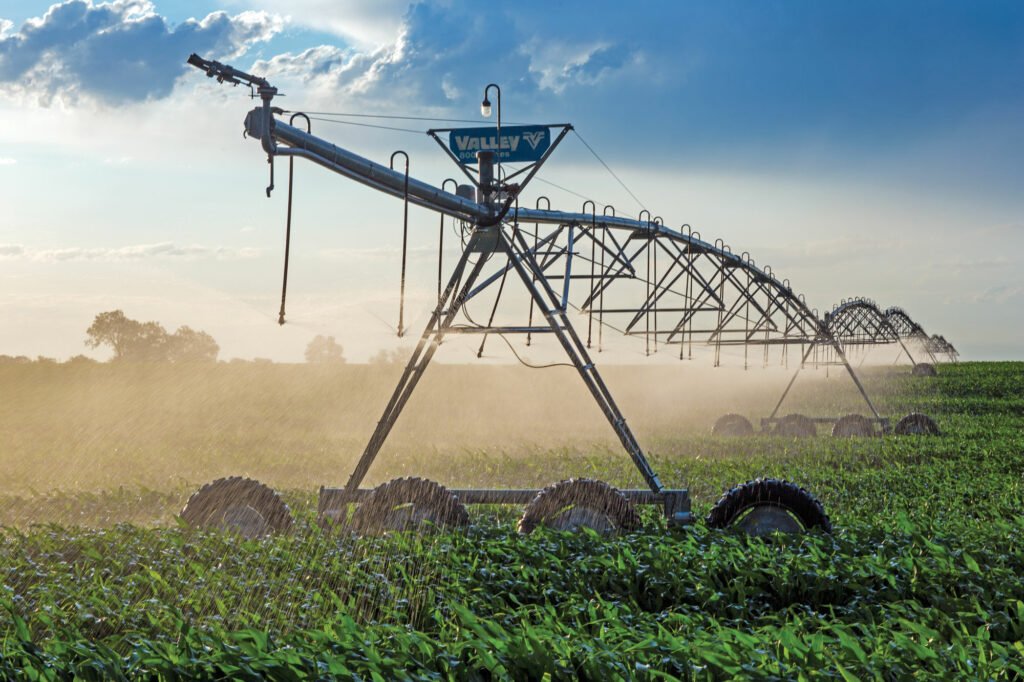
productsoftomorrow
Protect Your SkinGreen Technology in Action: Center Pivot Sprinklers and Sustainable Farming
Friday , 5, April 2024 Business and Management Comments Off on Green Technology in Action: Center Pivot Sprinklers and Sustainable Farming
With the increasing focus on sustainability and environmental conservation, green technology is playing a vital role in various industries. In agriculture, sustainable farming practices are being adopted to minimize environmental impact while maintaining productivity. One such technology that is revolutionizing irrigation systems in agriculture is the implementation of center-pivot sprinklers. These innovative systems not only help conserve water but also contribute to sustainable farming practices. Let's delve deeper into how center-pivot sprinklers are transforming the agricultural landscape toward a greener and more sustainable future.
The Benefits of Center Pivot Sprinklers
Water Conservation
- Center pivot sprinklers are designed to deliver water efficiently and precisely to crops, ensuring minimal water wastage.
- The systems can be programmed to adjust the water application rate based on factors such as soil type, crop type, and weather conditions, leading to optimized water usage.
Energy Efficiency
- Center pivot sprinklers are powered by electric motors that are designed to deliver water with minimal energy consumption.
- With advancements in technology, these systems can be integrated with solar panels to harness renewable energy, further reducing the carbon footprint of irrigation practices.
Uniform Water Distribution
- One of the key advantages of center pivot sprinklers is their ability to provide uniform water distribution across the entire field.
- This ensures that all crops receive adequate moisture levels, promoting healthy growth and maximizing yield potential.
Real-life Implementation
Many farms across the globe have already adopted center pivot sprinklers as part of their irrigation systems, showcasing the practicality and effectiveness of this green technology in action. One such example is the XYZ farm located in the heart of the Midwest region.
Case Study: XYZ Farm
- XYZ farm covers over 1000 acres of farmland dedicated to growing corn, soybeans, and wheat.
- The farm implemented center pivot sprinklers five years ago to modernize their irrigation practices and improve water efficiency.
- By using center pivot sprinklers, XYZ farm has been able to reduce water consumption by 30% while maintaining high crop yields.
- The farm has also seen a significant decrease in energy costs due to the efficient water delivery system of the center pivot sprinklers.
Environmental Impact
Reduced Water Footprint
- By optimizing water usage and minimizing wastage, center pivot sprinklers help in reducing the water footprint of agriculture.
- This has a positive impact on water resources, especially in areas facing water scarcity or drought conditions.
Lower Carbon Emissions
- With energy-efficient operations and the potential integration of renewable energy sources, center pivot sprinklers contribute to lower carbon emissions compared to traditional irrigation methods.
- This helps in mitigating the environmental impact of farming activities and aligning with sustainability goals.
The Future of Sustainable Farming
As the demand for food production continues to rise with a growing global population, the importance of sustainable farming practices cannot be overstated. Green technologies such as center pivot sprinklers are paving the way for a more sustainable and environmentally friendly agriculture sector. With ongoing research and developments in irrigation systems, we can expect further innovations that will enhance water conservation, energy efficiency, and overall farm productivity.
Key Points for the Future
- Investment in green technologies like center pivot sprinklers can lead to long-term benefits for farmers in terms of cost savings and environmental stewardship.
- Collaboration between agricultural experts, technology developers, and policymakers is essential to promote the adoption of sustainable farming practices on a broader scale.
- Educating farmers about the advantages of green technologies and providing support for transitioning to more sustainable practices are crucial steps towards building a greener agricultural sector.
Conclusion
Center pivot sprinklers represent a prime example of green technology in action, offering a sustainable solution for irrigation in modern agriculture. By embracing innovative technologies that prioritize water conservation, energy efficiency, and environmental stewardship, farmers can contribute to a greener future while ensuring the long-term viability of their operations. With the continued advancement of green technologies and a collective effort towards sustainable farming practices, we can build a more resilient and environmentally conscious agricultural industry.